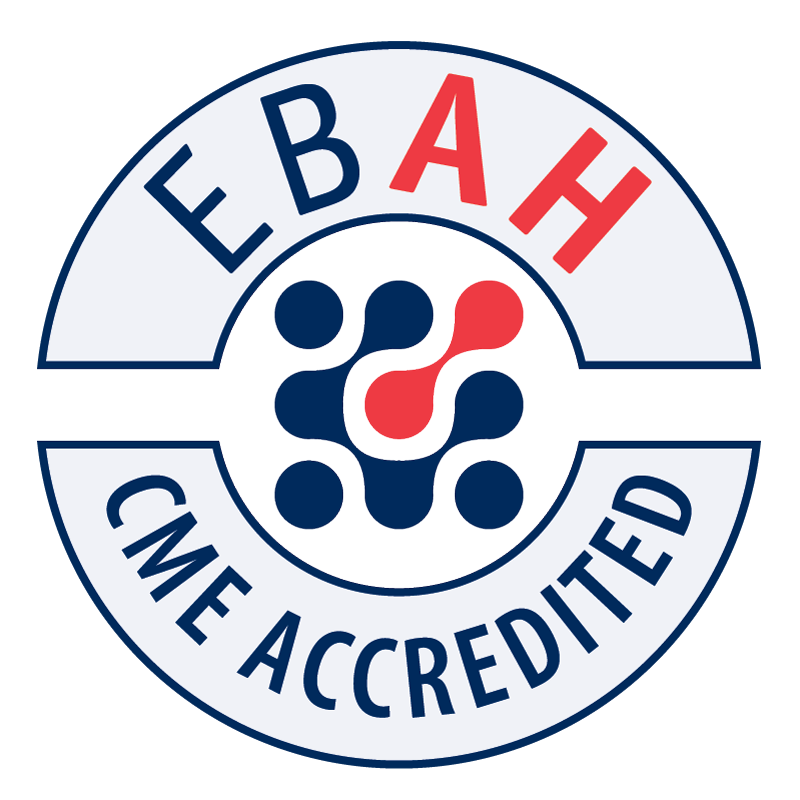2nd EHA-SWG Scientific Meeting on MDS/MPN/AML: Commonalities and Differences of Myeloid Neoplasms
Dates: April 30-May 2, 2026
Location: Ljubljana, Slovenia
Chairs: Konstanze Döhner, Shahram Kordasti, Claire Harrison and Jean-Jacques Kiladjian
Collaborating Specialized Working Groups (SWGs):
Registration for the meeting is open. For full details, visit our registration and accommodation page.
Overview
This comprehensive 2.5-day event builds on the success of the inaugural EHA-SWG Scientific Meeting on MDS/MPN/AML, held in November 2023, which has proven to be a pivotal platform for identifying key similarities and differences between Myelodysplastic Neoplasms (MDS), Myeloproliferative Neoplasms (MPN), and Acute Myeloid Leukemia (AML).
It aims to delve deeply into basic and translational science, while also exploring the most recent advances in science and clinical care for these diseases. Representing a unique opportunity to convene experts in these three distinct yet overlapping areas, the event is targeted at various levels, from experienced hematologists to junior trainees.
Program
The Scientific Program will incorporate a dynamic mix of keynote lectures, selected abstract and poster presentations, debates/roundtable discussions, and challenging clinical case analyses, with many occasions for interaction between the attendees and renowned experts in the field. It is designed to cover a broad spectrum of interests, including basic and translational science and clinical care.
Key topics will include:
- Diagnosis, Classification and Risk Assessment across MPN, MDS, and AML
- Recent genomic discoveries and challenges posed by the explosion of data from NGS and multi-omics platforms
- Microenvironment and immunome in myeloid malignancies
- Evolving treatment paradigms and novel therapeutic strategies in MPN, MDS, and AML, including combination therapies with novel drugs
Learning objectives
By attending this meeting, participants will be able to:
- Gain a thorough understanding of the latest developments in the pathophysiology and genomics of MDS, MPN, and AML
- Learn about the most recent advances in therapeutic strategies, including novel drugs, clinical trial findings, and emerging approaches such as targeted therapies, cell therapy and the role of alloSCT specific to MDS, MPN, and AML
- Understand how interdisciplinary research and collaboration between basic science and clinical practice can lead to significant advancements in patient outcomes
- Learn how to design, implement, and evaluate the efficacy of clinical trials, focusing on innovative methodologies
Target audience
The meeting is intended for:
- Hematologist-oncologists
- Research scientists
- Specialist nurses
- Patient advocates
- Medical students
- Hematology fellows
Meeting categories
- Basic, Translational, and Clinical
EHA Curriculum sections covered
- Myeloid malignancies
- Treatment of hematological disorders
- Laboratory diagnosis
Registration
Registration for the meeting is open. For full details, visit our registration and accommodation page.
Abstract and clinical case submission
Abstract and clinical case submission is an important part of this meeting.
Abstract submission is open. For full details, visit our abstract and clinical case submission page.
Sponsorship
If you’re interested in sponsoring this meeting, visit our password-protected sponsorship page.
If you’d like to request the password or you have questions about our opportunities, please email sponsorship@ehaweb.org.
Venue
Grand Hotel Union Eurostars
Mikloshicheva Cesta 1
1000 Ljubljana, Slovenia
EBAH accreditation
Continuing Medical Education (CME) is widely accepted to encourage individual practitioners to maintain and develop professional knowledge and skills keeping up to date with latest developments within the field.
The meeting will be accredited by the EBAH system.
Participants of this meeting are eligible to receive one CME credit point for every hour of accredited activity from the EBAH system.
